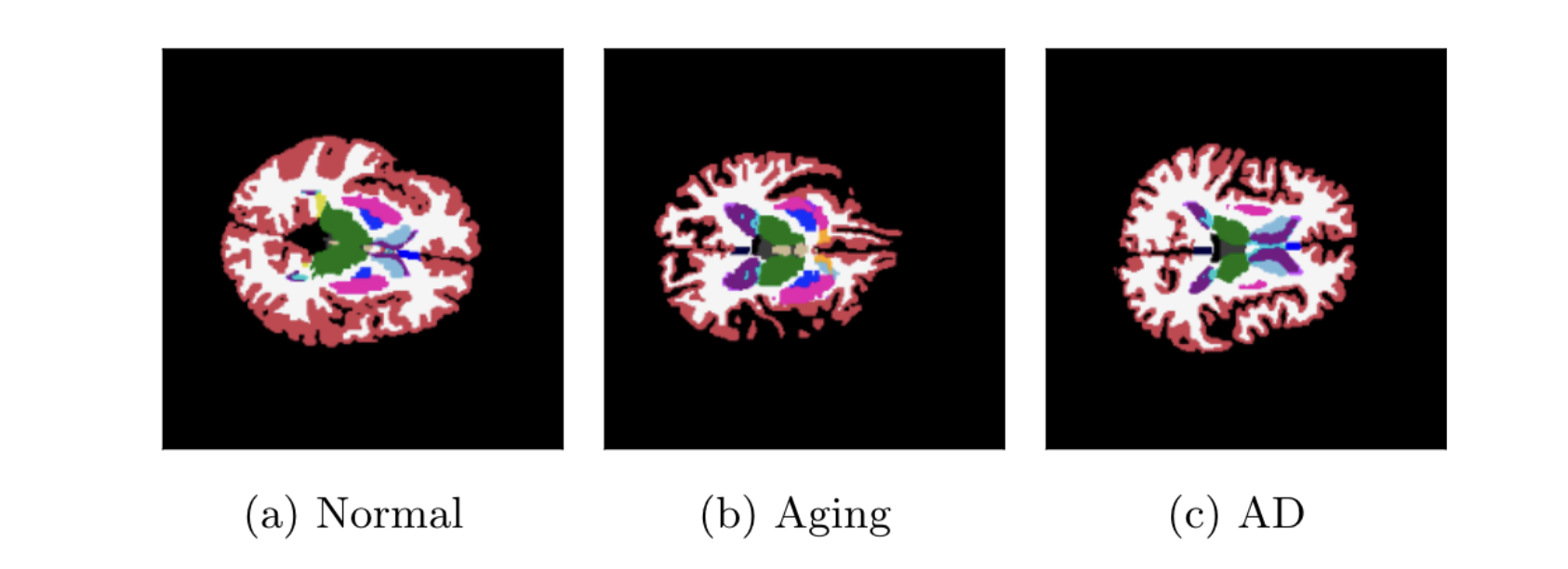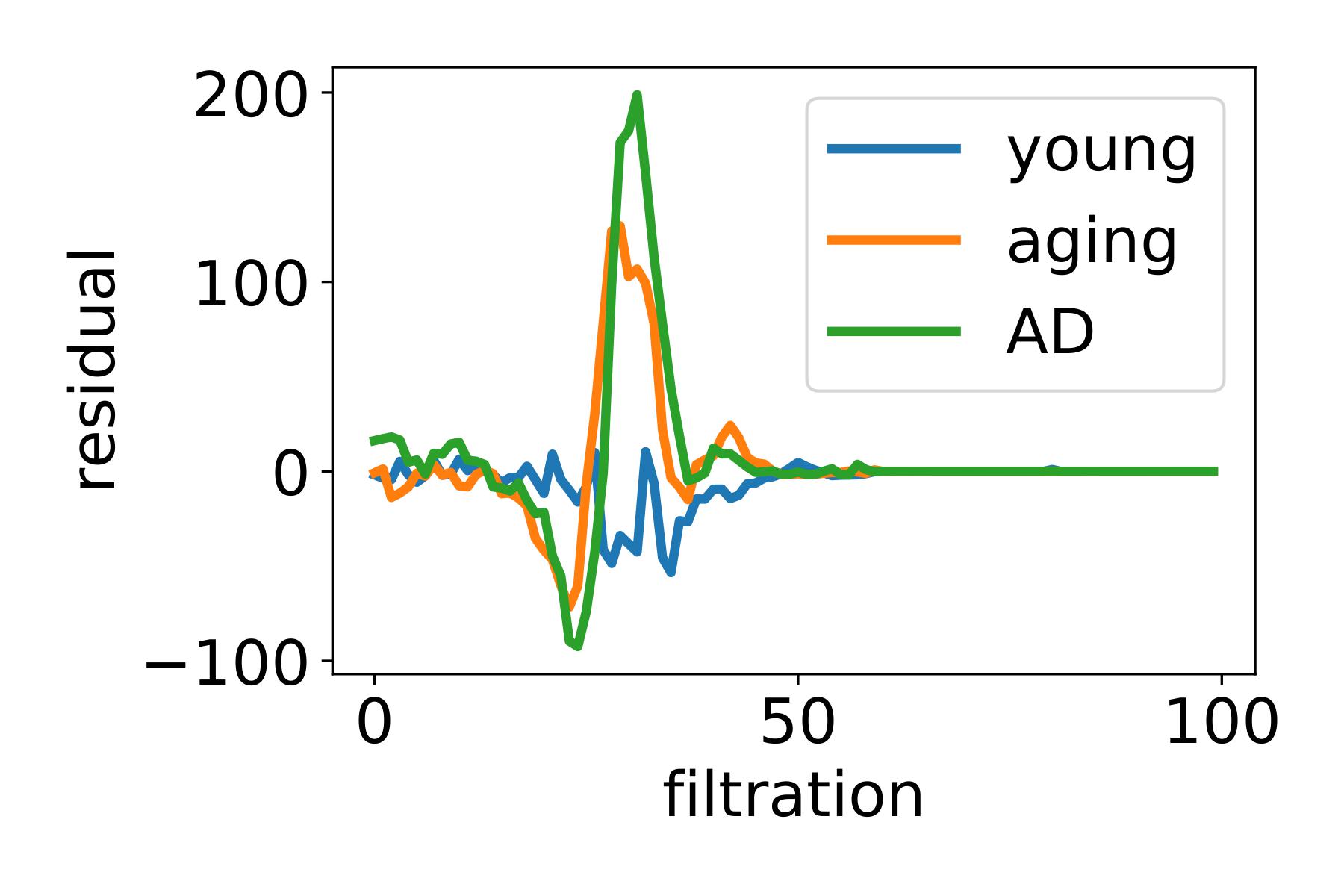topological detection of alzheimer's
My final year undergraduate project explored the relationship between the topology of brain MRIs and neurogeneration. It was completed under the supervision of Rik Sarkar. The goal of this project was twofold:
- Identifying whether algebraic topology can act as a measure of brain deterioration, and
- Training more explainable models for Alzheimer’s detection and brain age prediction

You may ask yourself what is algebraic topology? and, why do we care?
Topology and data
To answer the first question, algebraic topology is a subfield of general topology, a mathematical discipline which studies shapes much like geometry. While geometry studies shapes concretely, in terms of size, distances and angles, topology assumes that all shapes are infinitely stretchy and squishy so that a ball can be squished into a cube and vice versa. The question that topology then tries to answer is how do we know which shapes can be moulded into each other and which ones can’t. Algebraic topology, provides a set of tools in which this can be done by assigning algebraic objects to shapes in order to characterise their structure.
The main tool used in my research was homology, which assigns an algebraic object, called a group, to each shape to describe the way the holes in the shape interact with one another. In essence what this means is that we have a general way to measure and classify the holes of an object in arbitrary dimensions.
Topology in and of itself is a very abstract area of pure maths that emerged in the early 20th century. Algebraic topology which followed in the proceeding decades adds an additional layer of abstraction by trying to describe shapes with these ‘algebraic objects’. So you may be wondering why any of this is relevant to data analysis and machine learning.
Imagine that you are given a set of points in 3D space that are randomly sampled from the surface of a donut. Now, if you didn’t know what kind of distribution the points were sampled from, how would you get an idea of what that distribution could look like? One approach would be to perform some kind of regression on the points, but then, could you ensure that the donut hole would remain intact in the regression model?
 An example of points forming a bumpy donut when connected. Image courtesy of Eric Bunch.
An example of points forming a bumpy donut when connected. Image courtesy of Eric Bunch.
This is where topological data analysis comes in. The main idea here being that if we were to inflate each point so that all the points are touching, we get something that should look vaguely like a bumpy donut. And then we can use homology to measure if this bumpy donut has the same structure as a donut. If the homologies are different then there is no way in which the bumpy donut can be smoothed to get the original shape back. However, if they are the same, there is a high chance that the points where obtained from something that looks roughly like a donut. So, topology can be used to understand the shape of data in places where traditional data science would fail.
This gets us to the motivation for using topology on MRI scans. Every brain is unique, we can’t really expect geometric measures to directly tell us how different a sick brain is from a healthy one because the two are always going to be geometrically very different, in terms of size, shape, density, etc…. Topology can however provide useful information by ignoring the peculiarities of each individual’s brain and instead relying on more structural information.
Results
To give a quick summary of our results from the paper, we found that topology can be used as a fairly good measure of age. However, topology struggles to identify subtle distinctions between brains with slightly abnormal ageing patterns which can be quite common. Topology on it’s own is also a bad measure of Alzheimer’s because it can’t distinguish between degeneration due to ageing and degeneration due to the disease. In order to counteract this issue we found that by predicting the topology of a healthy brain at the subject’s age and then subtracting this from their true topology we can drastically improve classification results.

Links
The code for the experiments can be found here, while the paper published at the Topological Data Analysis and its Applications for Medical Data workshop can be found here.